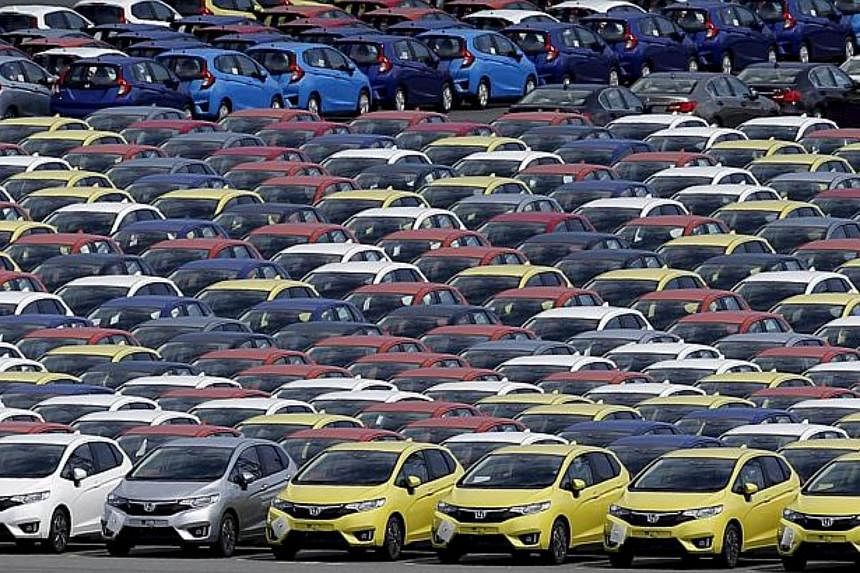TOKYO (REUTERS) - Japanese industrial output fell in May at the fastest pace in three months, adding to fears the economy may have contracted in the current quarter and putting the onus on consumers to drive a near-term rebound as exports remain in the doldrums.
The 2.2 per cent decline in output compared with the median estimate for a 0.8 per cent drop and a 1.2 per cent increase in April, government data showed on Monday.
Economists are already forecasting much slower economic growth in April-June as manufacturers curb production to lower stubbornly high inventories. But some analysts say the risk of an economic contraction in the current quarter cannot be ruled out, noting that sluggish exports remain a drag on growth.
"We were expecting GDP to be flat in the second quarter, but now there is the possibility it could contract," said Shuji Tonouchi, senior fixed income strategist at Mitsubishi UFJ Morgan Stanley Securities.
"Consumer spending and capital expenditure show things won't get much worse, but it will be harder to meet the Bank of Japan's forecasts for economic growth and inflation."
The fall in output in May was due to declines in production at auto manufacturers and electronics parts makers as these companies try to reduce a pile-up in inventories.
Manufacturers surveyed by the Ministry of Economy, Trade and Industry expect output to rise 1.5 per cent in June and rise 0.6 per cent in July, the data showed.
Japan's economy is expected to have expanded an annualised 1.3 per cent in April-June, much less than the 3.9 per cent pace clocked in the previous quarter, as companies trimmed output to focus on lowering inventories.
Many economists say this slowdown should be temporary as consumer spending and capital expenditure are showing signs of driving future growth.
Yet, they still expect the Bank of Japan will ease policy again later this year to spur activity and push up inflation to its 2 per cent target.
Separate data on Monday showed retail sales rose 3.0 per cent in May from the same period a year ago, more than the median estimate for a 2.3 per cent annual increase.

